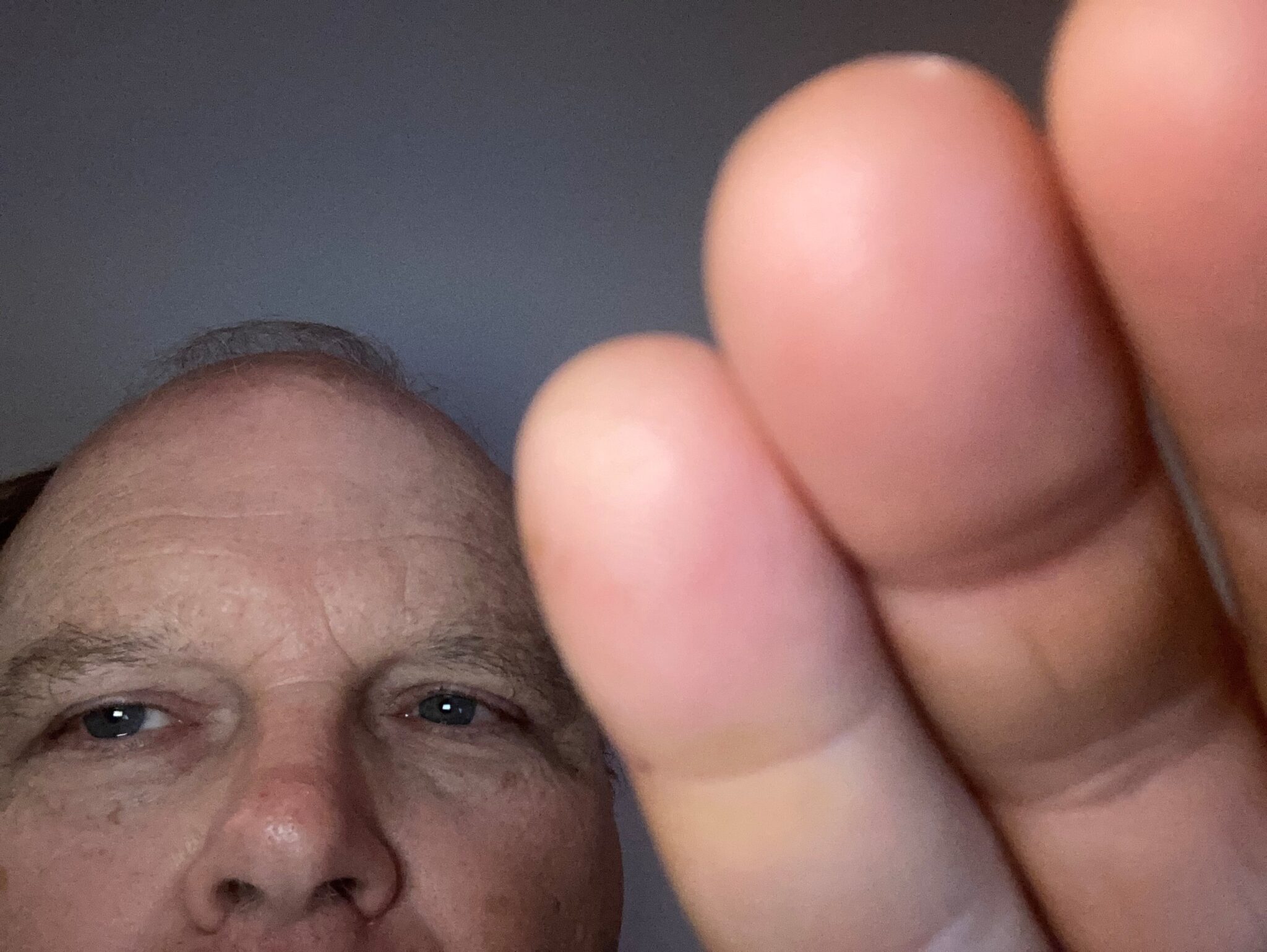I received a phone call from a shepherd many years ago. He was confused as to why his ewes refused to eat what appeared to be beautiful alfalfa hay. I asked the shepherd to send me a couple of representative flakes from the small square bales the ewes did not want to eat.

Using the senses of sight, smell, and touch along with chemical analysis determine forage quality. (Photo Credit: Keith Johnson)
Several days later, a sturdy brown box arrived from the shepherd. I opened the box and inside was some beautiful alfalfa hay; emerald green, late bud to early flower and great leaf retention. Very visually appealing hay. Why would any sheep refuse to eat such a fine specimen I asked myself as I moved my hand towards the hay in the box? Ouch! Within the beautiful smelling hay was a trace of Canada thistle, a very small trace, which was not visible to my eye. The spines on the thistle pierced my skin and several spines remained as I quickly withdrew my hand from the hay.
I called the shepherd back and told him what I had found in the hay. He said he would call me right back after he made a trip to the barn to inspect the mouths of his ewes. Within 30 minutes the shepherd called me back and reported that the mouths of the ewes were definitely irritated. If you can feel empathy for sheep, I was experiencing this emotion. I would refuse to eat this hay, too, even though a laboratory analysis would likely show that it had a protein content over 18 percent and a total digestible nutrient content in the mid 60’s.
This reminded me of some research that had been done evaluating the nutritional quality of different weeds. Canada thistle was one of the weeds evaluated. Its nutrient profile was similar to alfalfa hay! Looking at a forage analysis wasn’t going to tell me that Canada thistle was in this hay.
I truly believe that forage testing is a best management practice that all livestock owners should do. Laboratory results can be used to feed different hays in inventory in the right order as nutritional needs of cows, does, and ewes change as they go through their yearly cycle of maintenance, different months of gestation and lactation. A supplementation strategy can be developed, too. Excellent information about forage testing such as how to sample hay or silage, where to purchase hay probes and locations of certified laboratories can be found at the website www.foragetesting.org. Many Purdue Extension offices have a hay probe that can be loaned for use.
My experience with the shepherd and his ewes refusal to eat high quality hay as detailed by the numbers on a laboratory report, reminded me of how important it is to use your senses to evaluate hay, too. Previous to this encounter of hand meeting thistle, I would have used the words “visual appraisal” as hay was being assessed. However on this day, I opted to change the physical evaluation of hay to sensory analysis.
Sight can tell us what species are found in the hay, maturity of the crop at harvest, leaf retention or loss during harvest, whether there is mold, and the presence of foreign objects. But it wasn’t sight that first told me that this beautiful looking hay had a problem waiting for the ewes; it was touch. Touch can tell you whether the hay was made too moist and whether it is heating due to this excess moisture. Palatability can be reduced if hay is so coarse that it irritates the mouth of the consuming animal. Smell can determine whether hay is musty from the presence of molds that are not noticeable with the eyes. Hay that smells more like tobacco rather than hay is an indication that it heated during the curing process and likely has a high unavailable protein content. A vinegar smell is an indication that hay was recently baled with organic acid preservatives at baling to reduce the microorganism population that causes heating and molds to form. I haven’t opted to use taste or hearing to evaluate forages, but rest assured your livestock have used taste to assess the feed source that you provide.
For more information about sensory analysis of hay, Purdue Extension publication “Sensory Analysis of Hay Quality for the First Time Buyer” can be found at https://www.extension.purdue.edu/extmedia/AY/AY-374-W.pdf.



